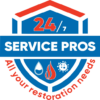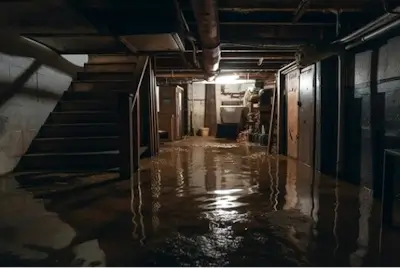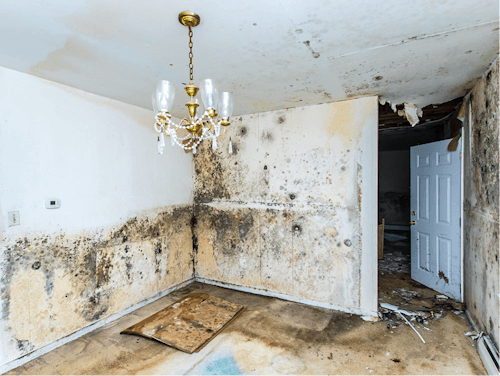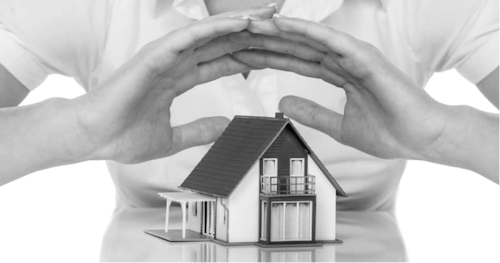Water damage might occur unexpectedly. Once it happens, it’s a battle to limit the damage. Flooding, leaking, or burst pipes may cause destruction that is hard to restore or mitigate. That is why it’s important to know what exactly water mitigation and restoration is.
Although the terms water mitigation and restoration are frequently used synonymously, they have significant differences. Each includes different stages in the process of recovering the integrity and usability of a property. In this article, we will get into the details of how water mitigation differs from water restoration. This information will help you decide which situations require which services.
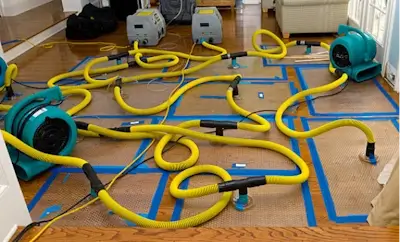
Water Mitigation and Water Damage Restoration – Differences
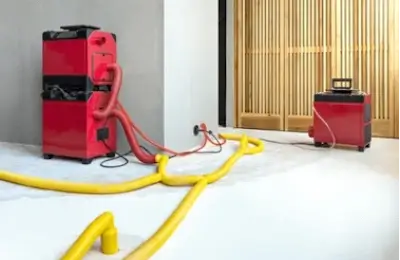
Water damage in a house or office can be disastrous, resulting in expensive repairs, damaged furniture, and health risks. The two primary services that can be beneficial when there has been water damage are water mitigation and water damage repair. Though they both deal with water damage, there are a few key differences between the two businesses.
Timing
Water damage restoration happens after mitigation to recover the property, whereas water mitigation happens right away following the water penetration to stop additional damage.
Water damage restoration may take 10-20 days, but water mitigation is a shorter process that often takes a few days. Nonetheless, depending on the extent of the damage, the amount of time required can vary but mitigation will always take shorter than water restoration.
Process
Water damage restoration is largely concerned with rebuilding and repairing the water-damaged areas, while water mitigation deals with preventing water from further spread and reducing damage such as flooding.
Steps
Mitigation includes providing emergency water extraction, and drying, whereas restoration is done afterwards for repairing, cleaning, and sanitization of the water-damaged property.
Results
The goal of mitigation is to avert more harm and prepare the area for restoration. Restoring a property, on the other hand, after the damage is done is the goal of the water restoration process.
Types of Water Contamination
Groundwater, leaking gutters, and increasing water tables are some of the sources of water damage caused to your home or office. Water leaks or burst pipes, clogged toilets, malfunctioning water heaters, roof leaks, or overflowing bathtubs or showers can also be a potential cause. These different causes leak three different types of water in your living spaces. Determining the type of water will also determine the right service needed.
- Clearwater gets in your spaces through plumbing faults, water leaks, burst pipes, etc. This water is generally clean.
- Gray water is dirty water that potentially contains waste and is not safe if it comes in contact with objects or people.
- Lastly, black water is highly contaminated and hazardous to health. It can come from sewage leaks or clogged toilets.
Water Mitigation Process
Water mitigation services involve drying out any impacted areas and eliminating standing water to stop additional water damage. Before the experts arrive, you can begin some of the preparations, opening the drains, mopping the area, Removing furniture, decoratives, or rugs, ventilating the area, etc. Anything you can do to speed up the drying process.
Utilizing specialized tools and methods, water mitigation services work to stop additional damage caused by water infiltration. Water mitigation will involve steps to repair and control the damage to your property.
Step of Water Mitigation
The water mitigation process involves the following steps and proced
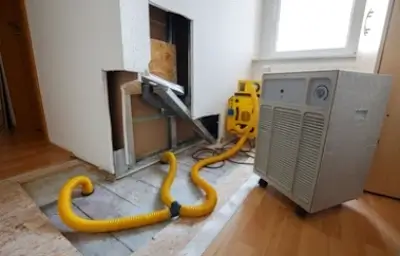
ures:
- Removing any impacted items, such as ceiling, drywall, flooring, beams, soft furnishings, and furniture.
- Water is extracted and the damaged area is dried using Professional equipment and specific processes.
- Sanitizing and cleaning the objects and areas that are not de
stroyed. - Covering windows, doors, and wall units and taking other appropriate safety measures to preserve the integrity of the property.
Water damage mitigation services usually aim to prevent further consequences from occurring from the disaster.
Water Damage Restoration Process
This process takes place after water damage mitigation is done. The aim is to return your property to its original state. Water damage restoration service providers will fix and rebuild the damaged areas.
Skilled experts will restore your home using methods and tools before providing rebuilding or reconstruction services. The kind and degree of water damage determines the methods and instruments to be employed. This is something you cannot do by yourself. You need to hire professionals.
Steps of Water Restoration
The water damage restoration process involves the following steps and procedures:
- Repairing the damaged walls
- Replacing the floor sheets or hardwood floors if the damage is extensive
- Fixing the damage to the ceiling or the roof
- Replacing the damaged drywall or the flowerbeds
- Disinfecting and cleaning the space
- Cleaning and drying carpets, furniture, etc
- Preventing mold growth
- Restoring moisture levels to normal
Conclusion
Contact 24/7 Service Pros today for prompt and professional water mitigation and restoration solutions. With our 24/7 availability, you can count on us to respond promptly to any water-related emergency. Whether it’s flooding, leaks, or burst pipes, our skilled team of experts is equipped to handle it all. Our water mitigation process begins immediately upon arrival, focusing on stopping the spread of water and minimizing damage.
Which Areas We Serve in South Florida?
- Hollywood
- Davie
- Miami Beach
- Weston
- Hallandale Beach
- North Miami Beach
- Sunrise
- Tamarac
- Coconut Creek
- Fort Lauderdale
- Miami
- Boca Raton
- Hialeah
- Margate
- Pembrock Pines
- Dania Beach
- Lauderhill
- Delray Beach
- Pompano Beach
- Deerfield Beach
- Coral Springs
- Plantation
- Doral
- Aventura
- Miramar
- Sunny Isles Beach
